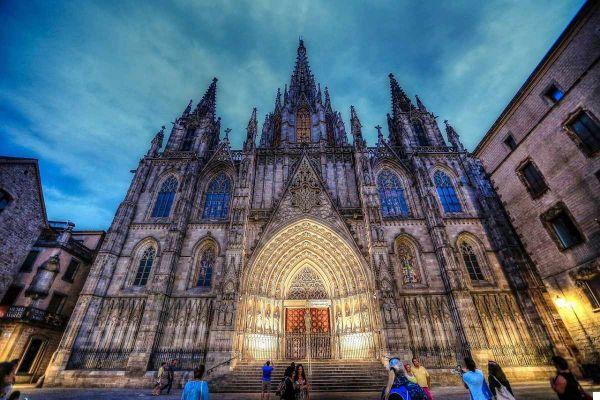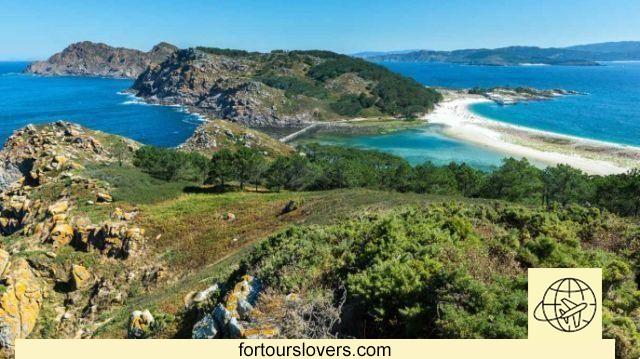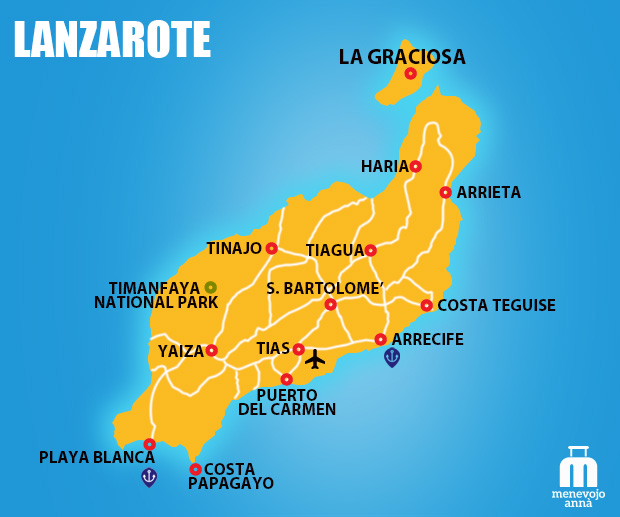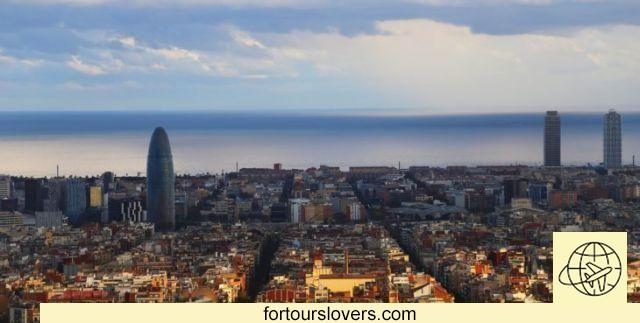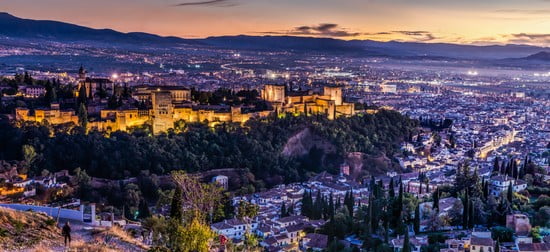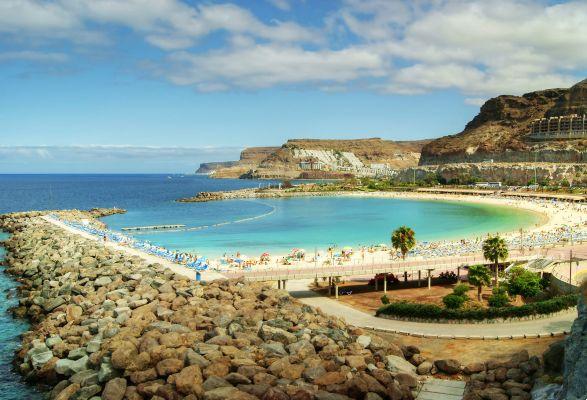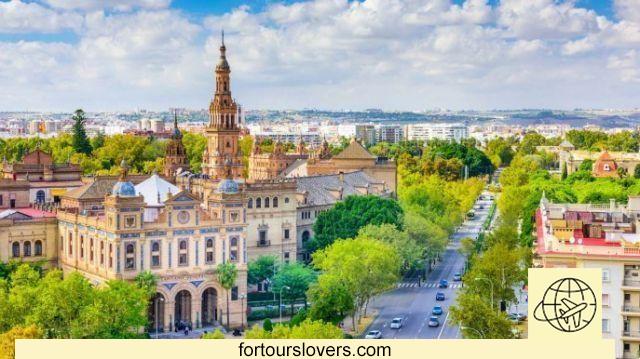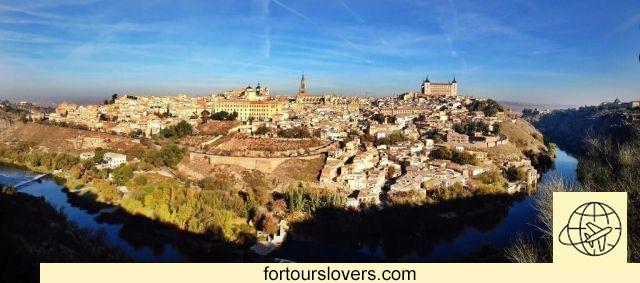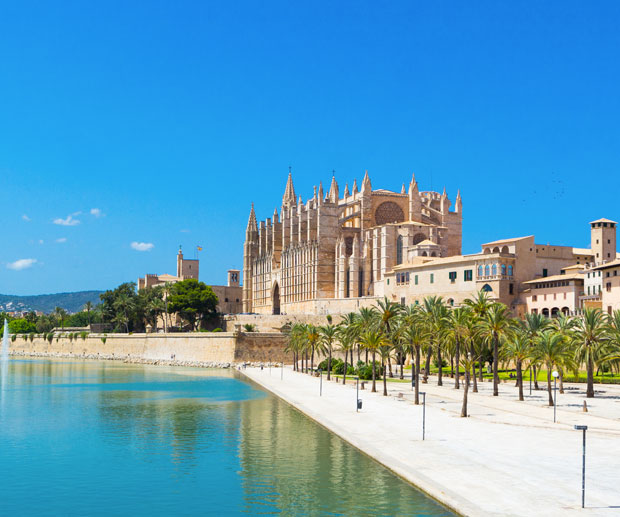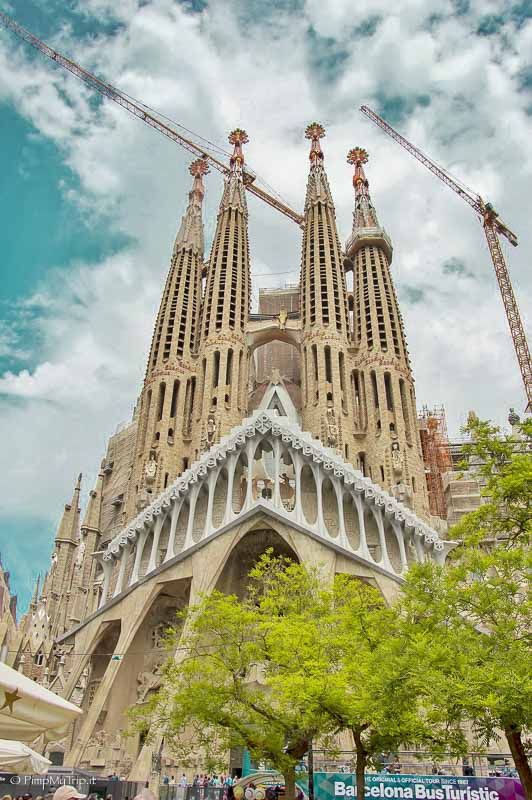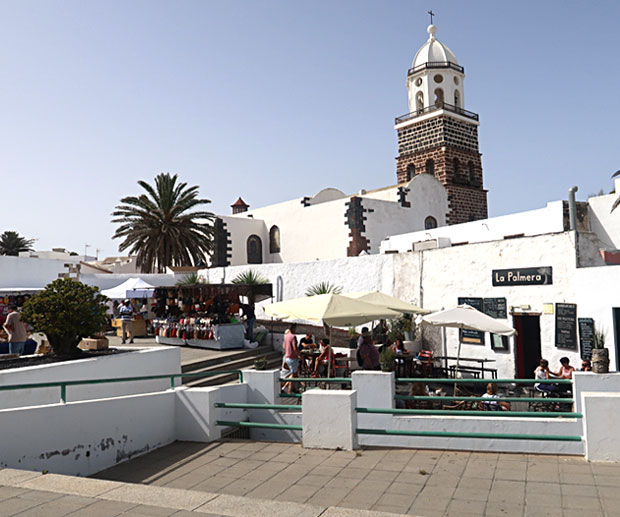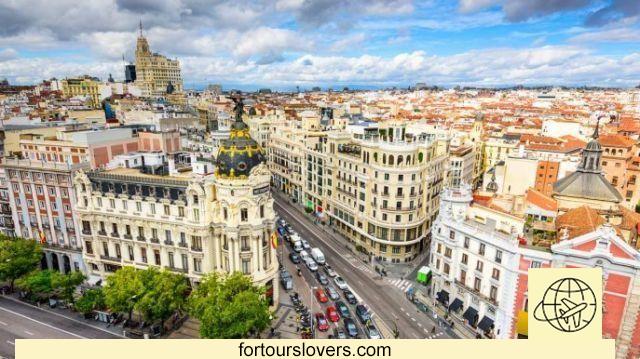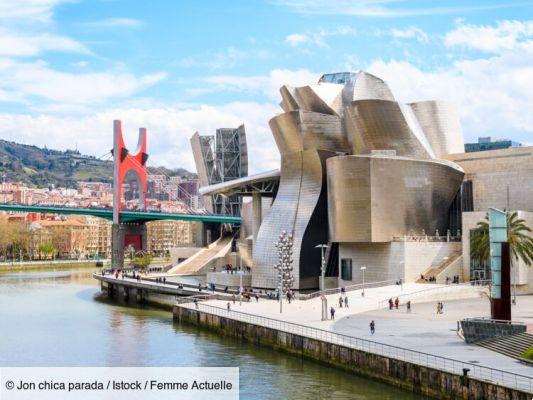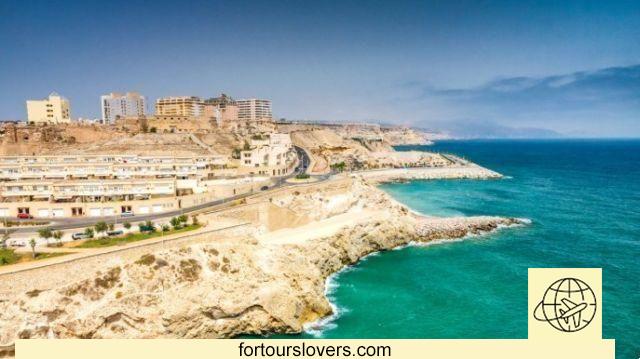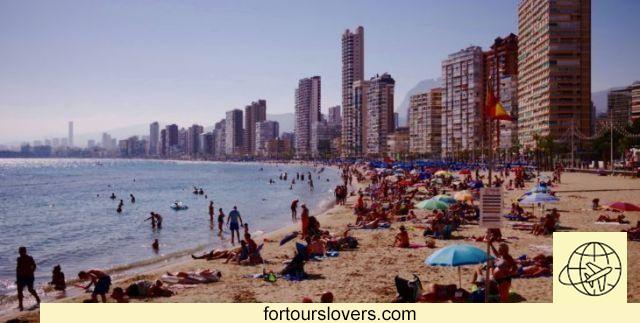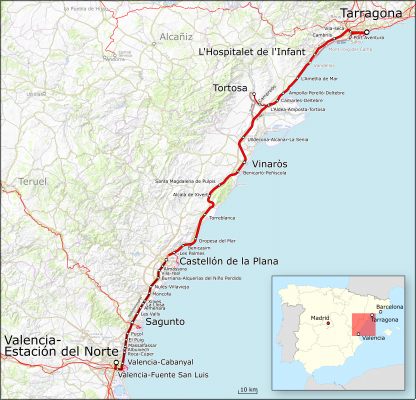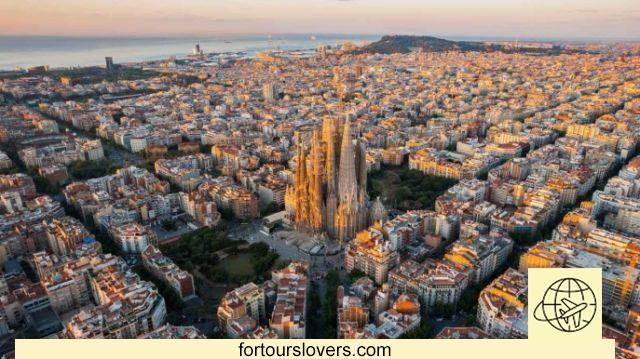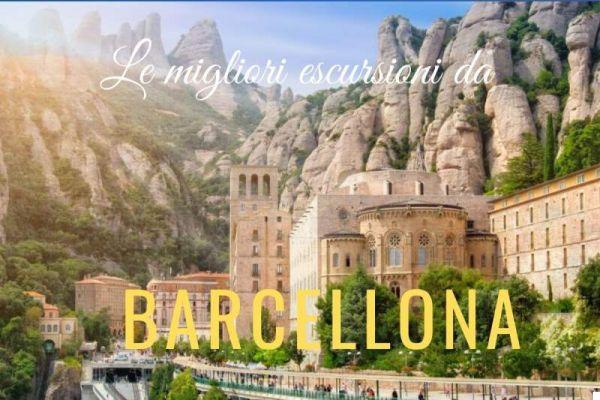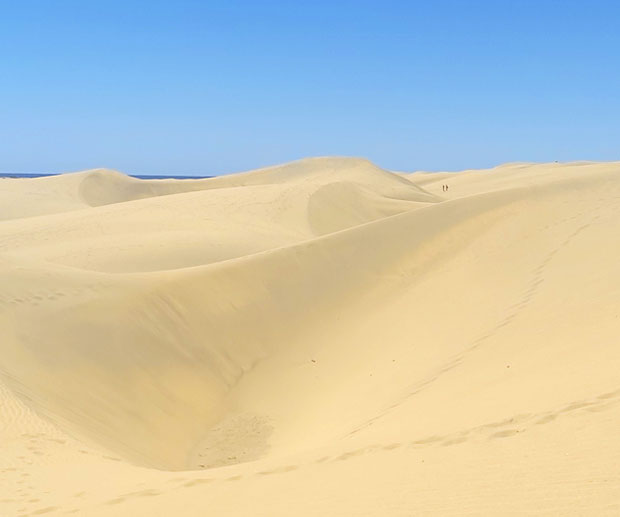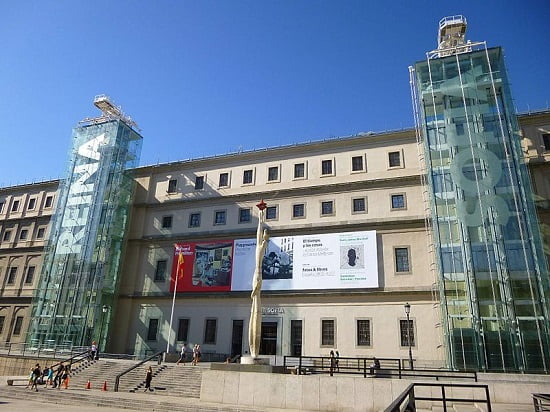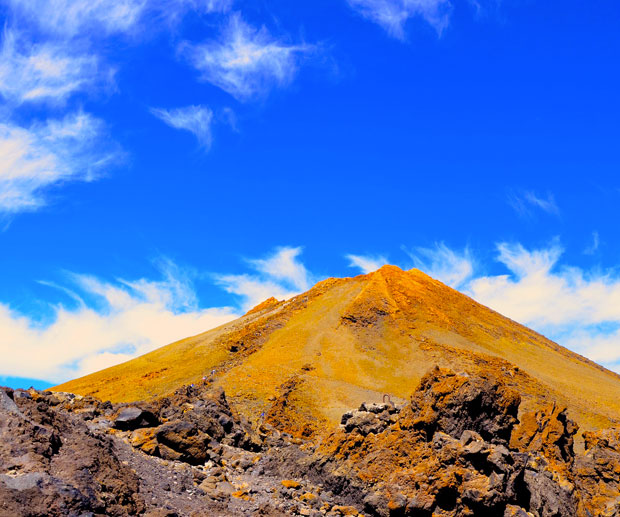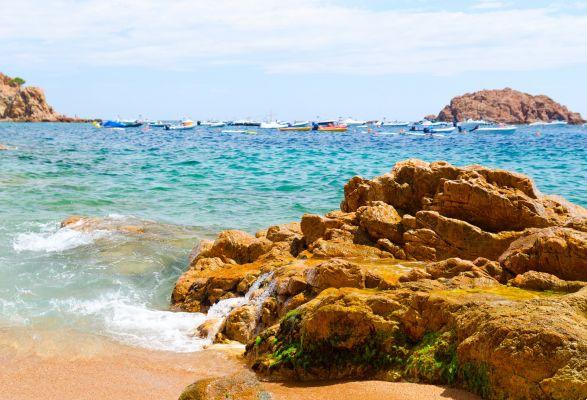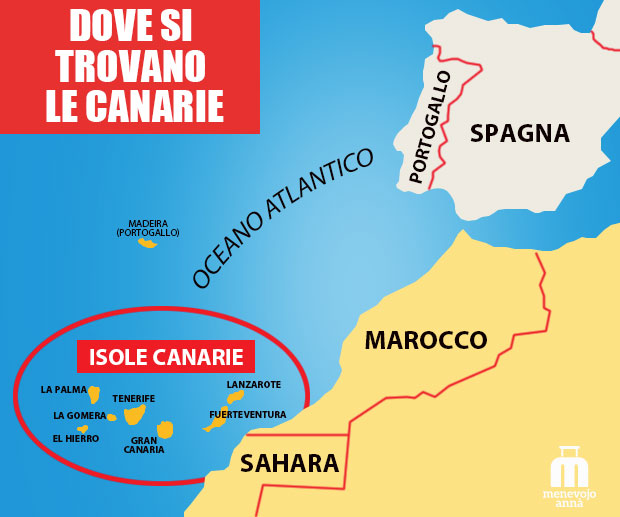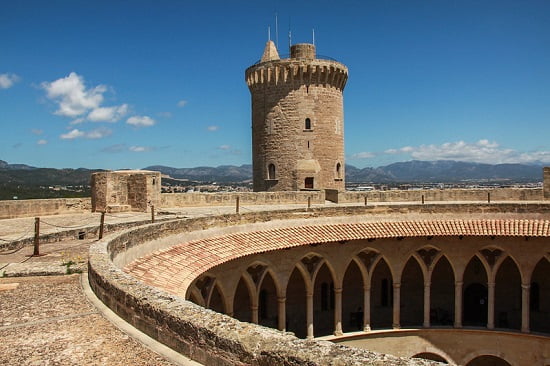This guide of what to see in Barcelona in 4 days will help you organize the best itinerary through one of the most amazing and visited cities in the world.
If you have 4 days in Barcelona you have two choices: the first is to follow my itinerary of what to see in Barcelona in 3 days and the fourth to do aexcursion to Montserrat (which believe me is really a marvel).
The second option is to visit the (almost) same things in Barcelona in 3 days, but in a more relaxed and in-depth way, taking advantage of the extra time!
In this guide I won't just tell you what to see in Barcelona in 4 days, but having lived there I will also give you lots of useful tips to visit the city without stress and without having to run too much.
ATTENTION: the days are interchangeable! I have set day 1, day 2 etc etc but you can also change day 1 to two and vice versa.
Also at the bottom of this article you will find theBarcelona itinerary in 4 days in PDF that you can print or download on your smartphone and take with you!
In this guide you will find:
-
- Useful tips for visiting Barcelona
- Itinerary Day 1: the Gothic Quarter
- Itinerary Day 2 - Main arteries and districts of Passeig de Gracia, La Rambla and El Raval
- Itinerary Day 3: Sagrada Familia, Parc Guell, Gaudì Experience
- Itinerary Day 4: El Born, Barceloneta or Montjuic Hill
- What to see in Barcelona in 4 days with children
Useful tips for visiting Barcelona
This list of practical tips for traveling to Barcelona it will help you to have a good first contact with this city.
reach your hotel or the city center from El Prat airport you have several transport options: train, bus, subway, taxi or you can book this convenient direct TRANSFER.
If you plan to use the subway to reach the points furthest from the center, I recommend abuy a transport card like the new T-Casual (old T10 card) or this BARCELONA CARD which allows unlimited use of public transport as well as entrances to some Barcelona attractions.
Another more convenient and interesting option to reach the tourist spots is book the hop-on hop-off sightseeing bus o rent a bicycle.
Book your tickets first and save valuable time. You can do it from this link.
Mostly buy Sagrada Familia tickets first which at the moment are only bookable online (if not, do not enter)
To do all the Barcelona itineraries in 4 days, I recommend you look for a hotel located in the heart of the city. For more information you can read this post about where to stay in Barcelona.
Book this free tour of modernist Barcelona is the best way to learn about the history and the most interesting anecdotes of this famous city.
Which Card to choose for Barcelona?
There are so many and each offers something different. I summarize here the most interesting (click on the links in blue for specific details):
Hello BCN card: includes all transport, CLICK HERE for full details
Barcelona Pass: Free admission to some TOP attractions (Sagrada Familia, Parc Guell, Hop-on hop-off bus, Barcelona cable car) plus discounts on other attractions. CLICK HERE to see what the BARCELONA PASS includes
Barcelona Card: Includes unlimited public transport, admission to some attractions (including the Picasso Museum) and other discounts. CLICK HERE to see what the BARCELONA CARD includes
Barcelona Card + Gaudi Package: Includes unlimited transport, Sagrada Familia, Parc Guell and other discounts. CLICK HERE to see what the BARCELONA CARD + GAUDI includes
FAMILY fun PASS: you have children? This is the gusta card! Includes Las Golondrinas cruise, Barcelona Zoo, Wax Museum and a Barcelona guide app. CLICK HERE to see what the Card includes
Barcelona Museum Pass (AIRTICKET): do you like museums? This is the card for you! Includes the Picasso Museum and 5 more of the best museums in town. CLICK HERE to see what the BARCELONA MUSEUM PASS includes
Itinerary Day 1: the Gothic Quarter
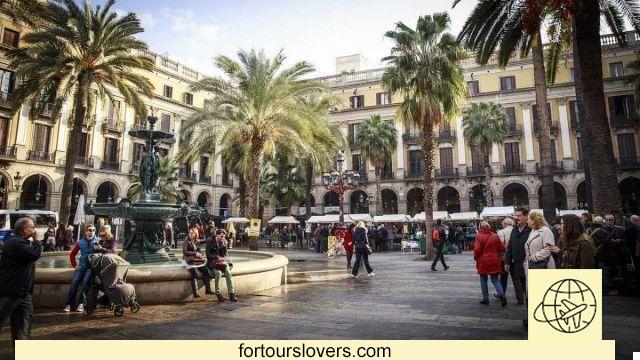
Let's start the itinerary of the first day from the beginning of the Rambla (in the lower part) from monument of Christopher Columbus and climbing towards Catalunya Square we visit the neighborhood where I lived, the old part of Barcelona: the Gothic Quarter.
Yes I know, you would like to see the most important monuments of Barcelona right away, but calm down you have 4 days available and you will surely have time to see everything!
The old part of the city was enclosed within the medieval city walls and even though you can't see them today (they are gone) this area still seems to breathe the stories of centuries past.
Your Barcelona itinerary must start here, wandering aimlessly but consciously, along the dark and narrow pedestrian alleys and cobbled streets.
I will only give a tip for the Barrio Gotico and La Rambla: pay attention to your things.
Most of the tourists who have their wallet or purse taken off have been robbed right here. It is not a "dangerous" place for your safety but pay attention to things of value.
In map Below you will find the itinerary of day 1. Keep in mind that the red route is indicative: the Barrio is a maze of narrow streets where you can get lost and walk around finding hidden corners.
On the map you can find the places to see (green ball) that I describe below in the itinerary of your first day.
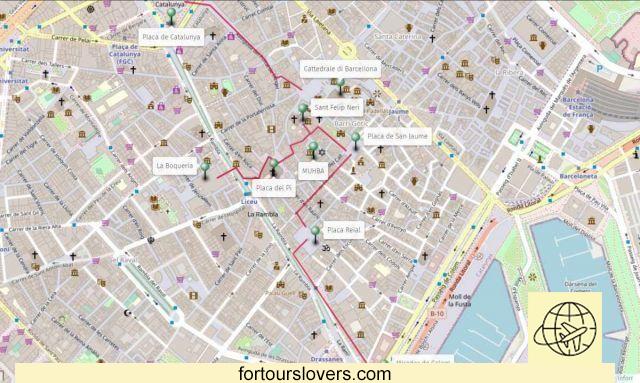
1 - Monument of Christopher Columbus
We leave for our itinerary of the first day from Colom viewpoint which is located at the southern end of the famous pedestrian street La Rambla.
Here, on a gigantic 60 meter high pedestal is one of the iconic symbols of Barcelona: the statue depicting the Genoese explorer Christopher Columbus.
If you want you can also climb to the top of the monument and enjoy a wonderful view of the harbor and the mountains. You will see the Gothic Quarter, the beach, the sea and the port.
Schedule: Open every day from 8:30 to 20:30
BUY YOUR TICKET FOR MIRADOR DE COLOM HERE
2 - Royal Plaque
Built in the XNUMXth century, Royal Square it is a square "designed" for the nobility with palms and arcaded buildings, it was supposed to be the place to pay homage to the King.
In the center is the Fountain of the Three Graces, and the two lanterns adjacent to it, guess what, are by Gaudi!
Placa Reial is one of my favorite places in Barcelona, but beware because it is always packed with pickpockets and in the evening, although very lively and full of beautiful clubs, it is not really the best for strolling for those who want to be quiet.
3 - San Jaume plaque
The political and cultural center of the city, Placa Sant Jaume, is bordered on one side by the seat of the Catalan government, El Palau de la Generalitat, and on the other by the Barcelona City Hall.
The town hall can be visited for free every Sunday morning, so make sure you plan your Barcelona itinerary accordingly or come back on Sunday to visit it, it's gorgeous inside.
La Placa Sant Jaume regularly hosts cultural events and events.
You could find shows, fairs or other events all year round but especially during Christmas.
This is also where everyone comes to demonstrate and voice their complaints, so it's not uncommon to see various groups with placards and banners.
4 - Placa del Pi and Sant Felip Neri
From Placa Sant Jaume, venture into the Barrio Gotico towards theold Jewish quarter.
In fact, in medieval times, the Jewish population was quite large and left some very well preserved buildings.
Look for two nice landmarks: Sant Felip Neri square e Pi square.
Sant Felip Neri is a very nice square, but difficult to find: difficult to find because it can only be reached through a narrow alley outside the Hotel Neri, try asking someone from the place if they point it out to you.
The walls of the square show the remnants of the Spanish Civil War. If you look carefully you will find holes: they are those left by a bomb that exploded here that killed mainly children who had taken refuge inside the homonymous church.
Placa del Pi it is a very lively square shaded by a large pine which gives it its name. It is popular with artists and often hosts fairs. Piazza Pi is a part of Barcelona that is mostly frequented by locals.
Take a look at the church of the same name of Santa Maria del Pi.
Do not miss the opportunity to climb the bell tower of the Basilica del Pi: from here you will have a breathtaking view (and little known by tourists).
5 - Lunch time: Mercado della Boqueria
If you got up early, it's probably time for lunch at this point on our itinerary.
From the Barrio Gotico go back to the Rambla and cross to the other side (do not stop on the Rambla, we will walk it for its entire length in theitinerary of day 2!).
La Rambla is not the best place to eat in Barcelona, the restaurants are quite expensive, very touristy and sometimes not of the highest quality. For this I recommend that you have lunch at La Boqueria Market!
La Boqueria it is the oldest and most famous market in the city. In ancient times it was located just outside the old walls and was famous because it was the market in which to find things that could not be found elsewhere.
Today, the market is still popular with locals and still has the reputation of being the city market with the widest choice: there is really everything here, from meat and fish to fruit, sweets and even stalls. food and tostadas.
In addition to all this, you will also find dozens of tapas bars, cafes and restaurants where you can stop for a delicious snack.
After you've had a good meal, it's time to go back and explore Barcelona! Go back to where we left off before your lunch break and continue your visit.
6 - MUHBA - Barcelona History Museum
Between Placa del Pi and Sant Felip Neri a short distance away, you will find the MUHBA, il Barcelona History Museum and decide if you want to visit it.
The MUHBA preserves and promotes a number of heritage sites throughout the city that help preserve its history and past.
Stop in Placa del Rei, almost adjacent to the Cathedral. This is the most interesting site because you can go underground and visit the real and well-preserved Roman Barcino (Roman castrum) under today's streets.
You can stroll along the Roman streets, see the houses they lived in and even some of the restored mosaics.
7 - Barcelona Cathedral
La Barcelona Cathedral (Cathedral De La Santa Creu and Santa Eulalia) was built in several waves starting from the XNUMXth century AD
There are early Christian foundations, Romanesque accents and a decidedly Gothic facade as the building was mostly completed in the 1300s.
The facade has eight stained glass windows, some modernist and others Renaissance. Enter the cathedral and admire the ceiling, the glass windows and, above all, the cloister which can also be accessed from a side street.
The cloister is made up of 4 galleries and surrounded by pillars flanking a garden with palm trees, magnolias, an orange tree and a fountain dating back to the mid-XNUMXth century, where the traditional "ou com balla" (the dancing egg) takes place. for which it is customary to "make an egg dance" in the waters of the fountain.
Next to the Cathedral is the Gaudí Exhibition Center, the first museum entirely dedicated to the works of Anton Gaudí.
Also here as in Gaudí Experience you will learn all about the architect through pictures, models, audiovisual material and documents - a must if you are a fan of his.
8 - Placa Catalunya
At the end of the first day's itinerary you will arrive in Catalonia Square, what many consider to be the center of the city and where you can sit, have an aperitif and simply watch the people go by.
Our first day itinerary is almost done (I'll give you a tip for the evening later)
One of the main buildings of Placa Catalunya which have become an institution is The English Court. A department store that sells anything, El Corte Ingles has become famous because you can buy and sell anything, no questions asked, at any time. In the square you can buy food to feed the pigeons that will come in hordes to eat from your hand.
9 - Barcelona Mysteries and Legends Tour
Because even for the evening not to stay in the Gothic Quarter and maybe go to discover its mysteries with a Barcelona Mysteries and Legends Tour?
With this evening walk around Barcelona you will discover the mysterious face of the city, setting out on the trail of its legends, shrouded in mystery!
The tour starts at the corner between Fontanella and Calle Estruc because a special astrologer lived here (NO spoiler), but not only: here the scorzonera stone, a mineral which, according to popular legend, helped cure various ailments.
We will then continue the mysterious Barcelona evening tour reaching the Barri Gotic (gothic quarter) discovering stories of mythical underground rivers, esoteric symbols and occult legends.
Book your Barcelona Mysteries and Legends Tour from here!
Itinerary Day 2 - Main arteries and districts of Passeig de Gracia, La Rambla and El Raval
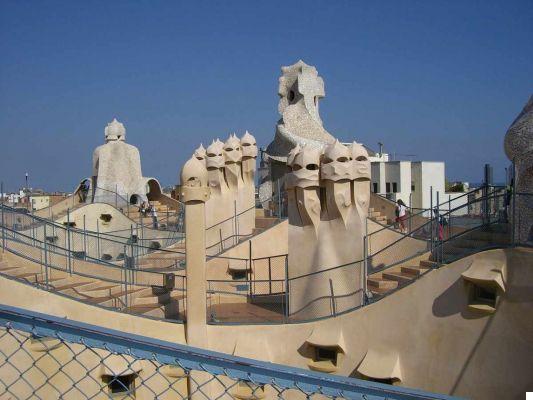
On the second day in Barcelona, let's explore some of the highlights of the city, such as La Pedrera, Paseo de Gracia, Battlo House.
Below is the map of the itinerary of the second day in Barcelona. Legs on your shoulders, there will be a lot of walking!
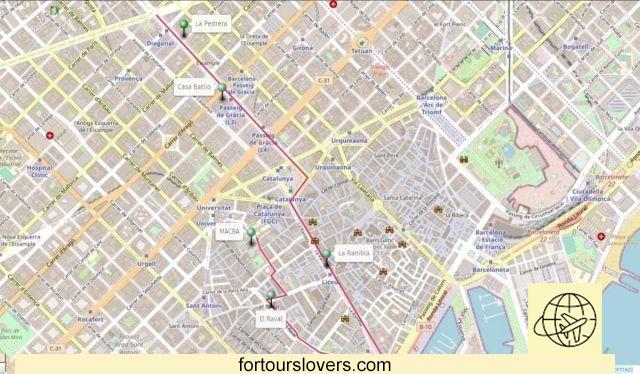
1 - Passeig de Gracia
Paseo de Gracia and the main commercial artery of the city. All the luxury and high fashion shops are here plus two of the Gaudi's most famous buildings.
2 - La Pedrera (Milan House)
Start from La Pedrera by Gaudi, otherwise known as Casa Mila which is definitely a must on your Barcelona itinerary.
La Pedrera is an imposing building with a wavy facade located in the upper part of Passeig de Gracia and declared a UNESCO World Heritage Site in 1984.
The whole building draws on nature, like most of the architect's constructions, and is an impressive building to visit.
During your visit, be sure to go up to the roof which offers a beautiful panorama of Barcelona.
As this is one of the tallest buildings in the city, you will get a clear view of the famous checkered plan of the Eixample district where you are now.
BUY LA PEDRERA tickets HERE
3 - Casa Batllo
Continue along Passeig de Gracia and you will come across Casa Batllo (across the street) in my opinion the best thing to see in Barcelona (I also like the Sagrada Familia more)
The dragon roof of La Casa Batllo, its interior patio and the many incredible small details make it a surreal work of art that could only be conceived by a genius.
What makes Casa Batllo unique is also the use of color and the various windows: it is truly a masterpiece.
BUY tickets for CASA BATLLO HERE
4 - Las Ramblas
From Placa Catalunya go down to the long port La Rambla, an avenue with a central pedestrian area surrounded by trees, with kiosks and terraces.
This important 1,2 km long boulevard was founded in 1440 and it is estimated that at least 70 million people walk through it every year!
Sometimes you will hear it called Las Ramblas in the plural: don't worry, it's only one way. The plural is used because the avenue is made up of five strokes with different names.
La Rambla was an important center of convents, businesses and gardens until the revolt of 1835 which led to the enactment of a decree called La desamortizacion de Mendiazabal, through which most of the Church's assets were confiscated.
The convents were burned and the face of the Rambla changed completely.
Stroll up and down to the sea, seeing the stalls selling everything and the street performers, this is one of the most charming parts of the city and a highlight of the Barcelona itinerary.
Some things to see on La Rambla:
Canaletes Fountain - At the top of La Rambla you will find the world famous fountain where all the triumphs of FC Barcelona are celebrated by thousands of fans: La Font de Canaletes. It's just a small fountain, but it's where fans come after a win.
Beethoven House - This is a music shop that sells sheet music, but some are so old and so beautiful that it's heaven for music lovers.
The Gran Teatre del Liceu - The city's opera house was set on fire several times and bombed by anarchists at the beginning of the 1800th century. It was built in the 1999s and has always been a symbol of wealth. The present building was reopened in 1994 after a fire in XNUMX destroyed it.
5 - The Raval
At this point on your itinerary, walking down La Rambla you should have arrived back at the Mirador de Colom (which you saw yesterday) and guess what? it's time to get back up!
Climb up from Columbus and venture inside the Raval district.
The Raval is the neighborhood that if you look at the Rambla from below will be on your left (in practice the equivalent of the Barrio Gotico).
It is considered the red light and immigration district of the city (the word Raval derives from the Arabic Rabad which means neighborhood) and once upon a time the inhabitants of Barcelona with children worried that the children would not set foot there!
Today the area has been reborn as a center for alternative artistic expressions and everything that makes Barcelona so unique, while remaining the home of the Muslim and Arab community.
You can find cafes, alternative shops, designer shops.
At night, it is not recommended: drug dealers and prostitutes are quite frequent.
While not dangerous, you may be put off by the constant "offering" of services.
Historically El Raval was an area where immigration was concentrated, quite intuitive when you think about it given its proximity to the port.
Since the 90s the government has made great efforts to clean up and revitalize the area by opening two very important art centers: the Center for Contemporary Culture and MACBA (Museum of Contemporary Art of Barcelona).
El Raval is a hipsters' paradise and it is absolutely worth going there both to walk its narrow streets and to see the MACBA!
Itinerary Day 3: Sagrada Familia, Parc Guell, Gaudì Experience
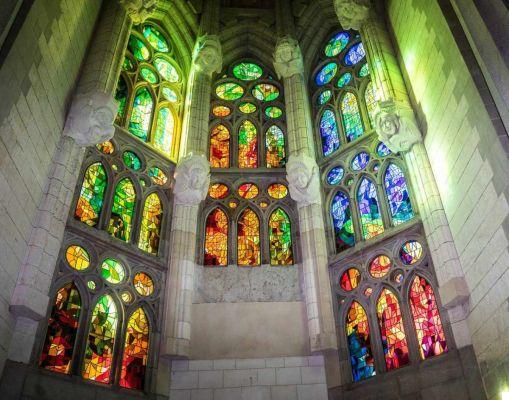
During the third day the itinerary will have you explore the most northeastern part of the city and visit other of Barcelona's highlights, starting with the famous one Sagrada Familia.
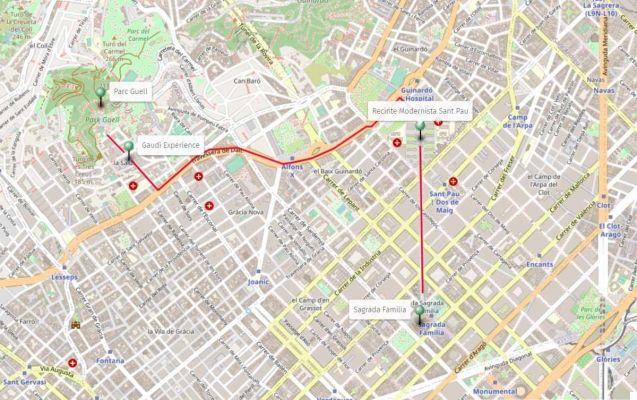
1 - Holy Family
Considered to be Gaudí's masterpiece, this impressive basilica was the work the architect was working on when he tragically died, it is therefore also known as his unfinished masterpiece.
The construction of the Sagrada Familia it began in 1882, although at the time of Gaudí's death in 1926 it was still less than a quarter.
Read mine tips for visiting the Sagrada Familia!
I have never been able to see it without scaffolding: it has always been under construction even though it seems that in 2026 it will finally be finished.
This does not mean that you cannot visit it, quite the contrary. Despite the work of
construction and renovation never seem to end, most of the buildings are open to the public.
Given the COVID situation, to enter the Sagrada Familia you must book your tickets online.
Or you can choose from the many tours (some with access to the towers too) that find here with skip-the-line options.
If you are undecided on which ticket to buy, check out my post on which ticket for the Sagrada Familia?
I also recommend that you read mine Complete Guide to the Towers of the Sagrada Familia
How to reach us: Eixample district, Metro L2 and L5 Sagrada Família stop
Timetables of the Sagrada Familia: from November to February: 9: 00-18: 00 / March: 9: 00-19: 00 / April-September: 9: 00-20: 00 / October: 9: 00-19: 00 / Closed 25 and 26 December, 1st and 6th January from 9:00 to 14:00
2 - Sant Pau Modernist Precinct
A relatively new opening for visitors to Barcelona, the Sant Pau Modernist enclosures is fast becoming one of the most popular attractions in Barcelona.
Originally built as a hospital, this series of buildings is one of the finest examples of Art Nouveau architecture in Europe and has achieved the status of UNESCO World Heritage Site together with the Palau de la Musica Catalana in the Gothic Quarter.
It's just an incredibly beautiful place to stroll, both indoors and out, and it's only a 15-20 minute walk to the Sagrada Familia. It is worth doing.
3 – Gaudí Experience
Before moving on to the next stop, Parc Guell, pop into the Gaudí Experience an interactive exhibition that will take you through the life and works of the architect responsible for many of Barcelona's sights.
There is an overview of some of his most important works, as well as a 4D cinema.
4 - Park Güell
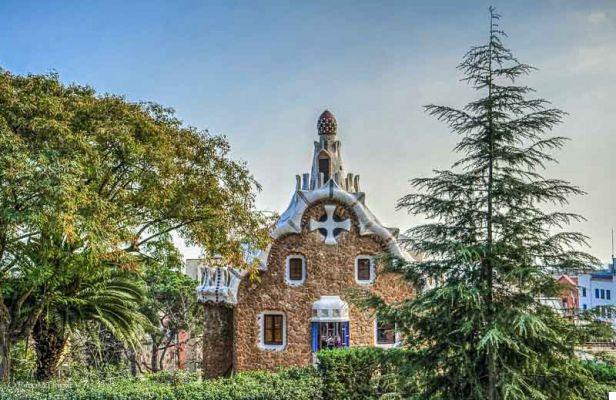
Located in the hills towards the north of the city, Park Güell is another of Gaudí's works.
This is a little different from anything you've seen so far, as it's a large park with a number of works to explore and visit.
Many of Gaudí's fictional works were created here, including the entrance houses, the main terrace, the serpentine mosaic bench and the colonnaded paths.
Park Güell until a few years ago was free and you could visit freely, but its enormous popularity (and the need to make money always and in any case) meant that this heritage that belonged to everyone, has become paid.
When I was in Barcelona I used to go there often for lunch, on beautiful sunny days.
But everything has a downside: timed entry allows for few visitors and therefore makes the visit more enjoyable. Some parts of the Park are still visible for free, but the key attractions are found in what is called the Monumental part and that requires a ticket.
We recommend book Park Güell tickets online in advance to make sure you don't get screwed. After purchasing your ticket, make sure you arrive at the specified entry time (even 10 minutes earlier), otherwise they won't let you in.
How to reach us: Via Olot 13, Barcelona. Bus 24 from Plaça Catalunya or Passeig de Gracia, Metro with stop Lesseps or Vallcarca. Tourist bus.
Opening Hours: lun-ven 8:30 – 20:30
On this third day I have included fewer things to see than in the previous ones. this is because you will already be tired of all the laps and then trust me, however this itinerary will keep you busy all day.
Itinerary Day 4: El Born, Barceloneta or Montjuic Hill
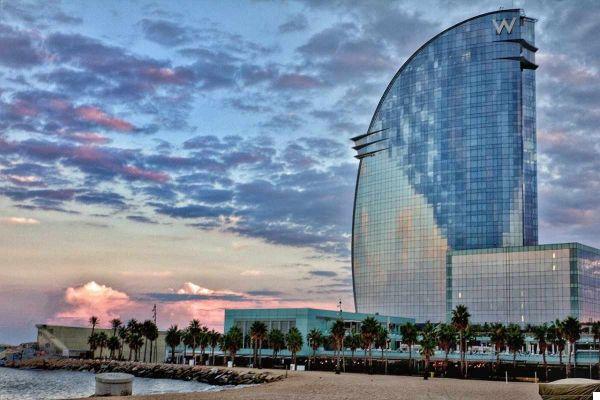
Today should be a relaxing day with some very local undertones. So you can end your Barcelona itinerary with the feeling of having lived the city, rather than having visited it as a tourist.
I've decided to give you two alternatives.
Both include El Born and Picasso Museum, then you can choose to relax at Barceloneta (and maybe hang out on the beach) or visit theBarcelona Aquarium if you have children, or opt to go on the Montjuic hill.
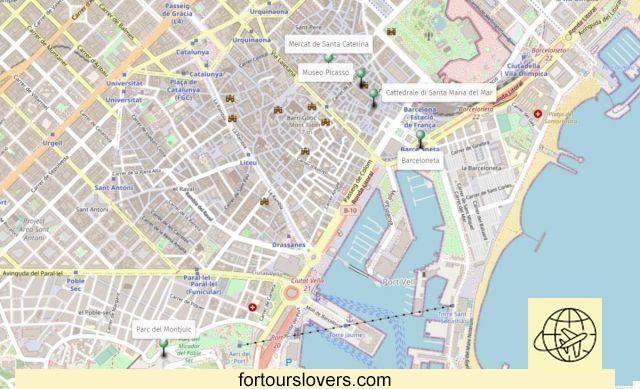
1 – El Born
Begin your itinerary in El Born by walking to the Basilica of Santa Maria del Mar, also known as the Cathedral of the Sea because it is dedicated to the Madonna who protects the sailors.
This architectural masterpiece is as important as the Cathedral in the Gothic Quarter and is considered by many to be the most beautiful church in Barcelona.
The Cathedral of the Sea owes its "success" not only to its beauty, but also thanks to Ildefonso Falcones, a Spanish writer who set his famous novel here (the Cathedral of the Sea) from which a TV series of great success.
Right next to the cathedral you will find The Fossar de les Moreres (Piazza dei Gelsi), built on the old cemetery belonging to the adjacent basilica of Santa Maria del Mar in which the defenders of the city were buried from the siege of Barcelona to the end of the war of the Spanish succession in 1714. A monument stands on the site as a reminder.
The place sometimes goes unnoticed by visitors. For Catalans, the fossar is more than a monument. It is a tribute. The flame on top of the monument is always burning.
Vogue magazine called El Born "the Brooklyn of Barcelona" and it has a bit of that artistic vibe: here you can find studios and galleries and one of the most important museums in Barcelona: the Picasso Museum.
2 - Picasso Museum
Although Picasso was not a native of Barcelona, he spent a lot of time in the city and his most important works are housed precisely in Picasso Museum.
The museum is located in a small palace and is worth going to.
3 - Lunch time: Mercat de Santa Caterina
Lunch at Santa Caterina Market where you can order one of the typical Catalan dishes on offer.
Totally renovated in 2005, it's a little wonder.
It has a multi-colored wave-shaped roof placed on a wooden structure, which shelters all the stalls in the market.
There are all the products of the producers of the area: fruit, vegetables, flowers but also fish, meat, pork butchers.
4 - La Barceloneta
From El Born you go down to the sea following the breeze and the smell of the port. There Barceloneta was a fishing town, today it is one of the nightlife districts of Barcelona.
In 1988 the decision was made to demolish the old beach restaurants, known as xiringuitos, and the public baths, heralding a process of opening the city to the sea.
Today the area exudes charm and modernity and the beach is always full of locals and tourists.
At Barceloneta you can decide whether to enjoy a relaxing afternoon walking by the sea and get some sun, have a drink in one of the bars or head towards the Vila Olimpica, the area that hosted the Olympic athletes during games.
Alternatively, if you still have plenty of energy, from the port take the Aeri del Port, the cable car and go to the Montjuic hill where a lot of other things await you!
5 - Montjuïc hill
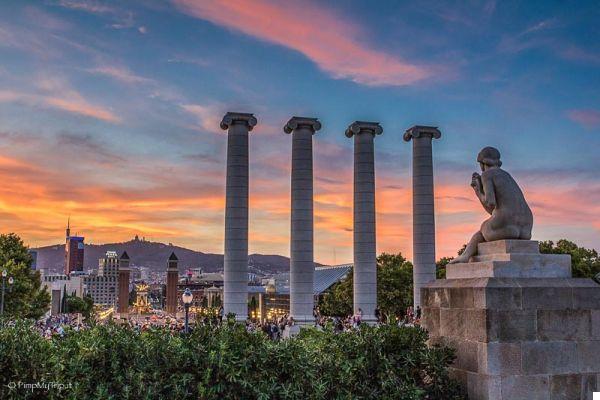
You can spend an afternoon here to visit the Castle, take the funicular and see the Magic Fountain: actually to see it as it deserves, it would take much longer.
But we know time is running out and this is the last of your 4 days in Barcelona, so let's see the main attractions of the Montjuic hill.
The first thing to see is undoubtedly the great fortress on top of the hill, the Montjuïc Castle. This immense fortress has played a key role in the history of the city over the past hundred years, serving as Spanish control over the Catalan city, as well as a prison center.
If you are interested in learning about the different regions of Spain, and in particular their architecture and food, then a visit to Poble Espanyol it should be on your list.
It is a huge open-air architecture museum, built in 1929, which consists of 117 buildings representing fifteen different regions of Spain, many of which are replicas of real buildings.
The Poble Espanyol is also home to local artists, restaurants and shops, and artists are also found here showing their crafts from glass blowing to jewelry making.
In short, there is a lot to see and do here and you could spend whole days there.
It also regularly hosts concerts, food festivals and other events.
Some tourists will definitely want to stop by Joan Miró Foundation on the Montjuïc hill. Created by the artist himself with the aim of promoting the work of young experimental artists, the museum exhibits a large number of Miró's creations, from the beginning to the end of his career.
The purpose-built building is also an impressive and logically structured structure, which will guide you through the artist's works. There is also a library which houses Miró's book collection.
An imposing building with spectacular views over the city, the National Museum of Catalan Art (MNAC) is a must see for anyone with an interest in the art of Catalonia. The collection is spectacular and so is the building itself: the Oval Hall in particular is worth seeing with one of the largest organs in Europe.
Take the elevator to the top floor to walk to the roof, which offers excellent views of the city.
6 - In the evening: Magic fountain
The greeting to your days in Barcelona is given by the show of the Magic Fountain, which you can see from the steps in front of the National Museum of Catalan Art.
A real spectacle to watch colorful jets of water to the rhythm of music!
Built in 1929 for the International Exposition and restored for the 1992 Barcelona Olympics, this is definitely a sight not to be missed. The program depends on the time of year - you can see it here.
What to see in Barcelona in 4 days with children
Ok, if you have children this itinerary should be slightly modified, Barcelona offers delicious things for the little ones!
1 - Barcelona Aquarium
Did you know the Barcelona Aquarium it houses the largest marine tunnel in Europe?
Located at the port, theBarcelona Aquarium it has a tunnel with big sharks, manta rays, sunfish, penguins and many other sea creatures that will fascinate your child!
You will also find many interactive spaces where children can play and have fun.
In summer the Aquarium is open until 21pm, but I recommend visiting in the morning or afternoon to see the shows.
You can book your tickets in advance here.
NOTE: At the Aquarium you can also organize birthday parties for children aged 3 to 10!
2 - Parc de la Ciutadella and Zoological garden
Many children love to go to the zoo, and the one in Barcelona is particularly impressive! Enjoy the wildlife at the Barcelona Zoo which is home to 2.000 animals from around 300 different species.
I recommend visiting the zoo in the morning when they organize activities for children aged 4 to 11 where children will see how dolphins are fed and meet a zoo veterinarian. Also, you can organize your child's birthday party there!
Here you can book your tickets for this family-friendly attraction.
Children under the age of 3 can enter for free.
3 - Tibidabo
Looking for even more fun things to do in Barcelona?
Il Tibidabo Park it is so charming and vintage looking, it will take you back to the 70s!
But don't let that stop you - all the attractions are safe, some are even brand new and have adopted this old style on purpose.
While you're there, you can hop on the magic carousel, any number of thrill rides or the glittering Ferris wheel to take in some of Barcelona's incredible panoramic views.
Oh, and don't forget to visit the Cathedral and stroll around the residential area for a while. It is adorable and your kids will surely love it!




